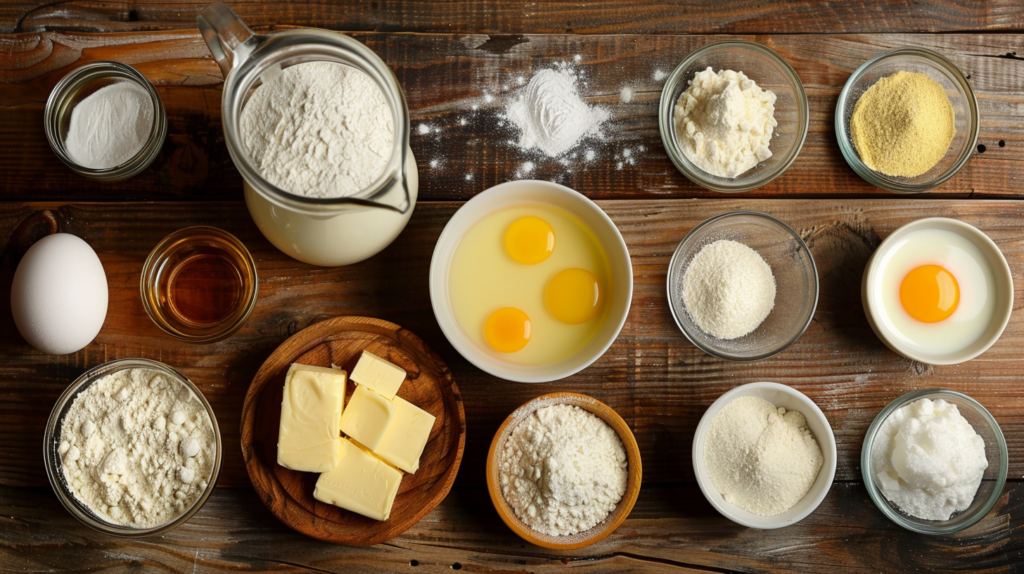Cotton Cake Recipe – Soft, Fluffy & Irresistible
Introduction
Origin of Cotton Cake
Cotton cake, also known as Japanese cheesecake or soufflé-style cheesecake, originated in Japan in the 1960s, thanks to the innovative work of Chef Tomotaro Kuzuno. Inspired by the classic New York-style cheesecake, Kuzuno sought to create a lighter, airier version using a combination of whipped egg whites and a delicate baking technique. His creation resulted in a cake that was incredibly soft, fluffy, and slightly jiggly—qualities that set it apart from traditional cheesecakes.
Global Popularity
Over the years, cotton cake has gained worldwide popularity, especially in Asia, Europe, and North America. It became a sensation due to its delicate texture, subtle sweetness, and melt-in-your-mouth feel. Social media has further boosted its appeal, with food lovers mesmerized by its gentle jiggle and cloud-like softness.
What to Expect
Unlike dense cheesecakes, cotton cake is:
✔ Light and airy – Almost like a fluffy soufflé.
✔ Slightly jiggly – Moves gently when touched.
✔ Melt-in-the-mouth – Thanks to its whipped egg whites and gentle baking method.
✔ Subtly sweet – With a delicate balance of flavors rather than overwhelming richness.
If you’ve never tried baking a Japanese cotton cake, get ready to experience one of the softest, most delicate desserts ever!
What You’ll Need
Before making Japanese cotton cake, gather the right tools and ingredients to ensure a smooth baking process.
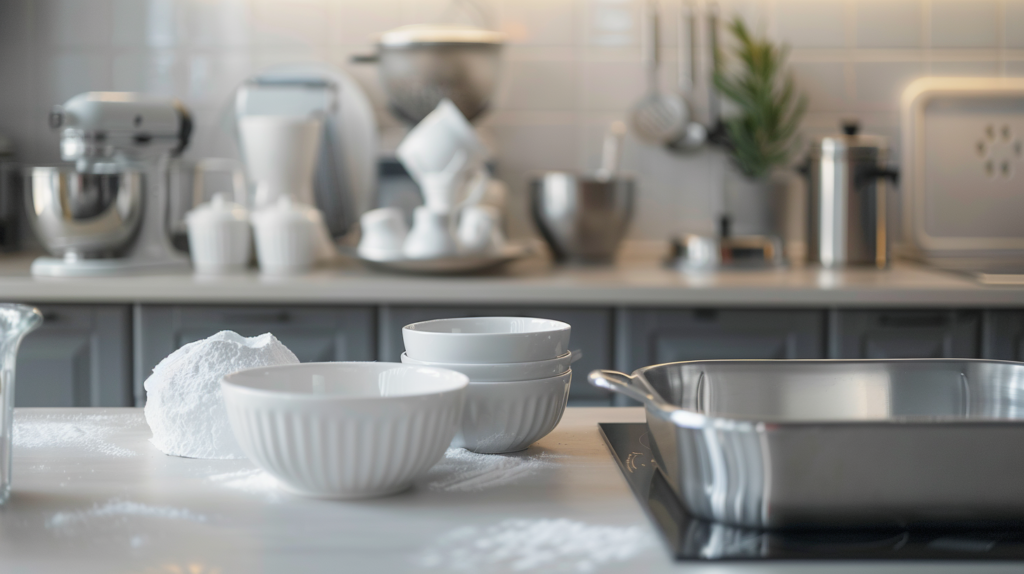
Essential Tools
1. Mixing Bowls
- Used for combining wet and dry ingredients separately.
- Ensure at least one bowl is large enough for whisking egg whites.
2. Electric Mixer
- Essential for whipping egg whites to stiff peaks, which creates the signature airy texture of cotton cake.
- A stand mixer or handheld mixer works best.
3. Sifter
- Prevents lumps by aerating the flour and cornstarch, ensuring a smooth, delicate batter.
4. 8-Inch Round Cake Pan
- Preferably a springform pan, lined with parchment paper to prevent sticking.
- The high sides help support the cake as it rises.
5. Large Baking Tray (for Water Bath)
- Also known as a bain-marie, this tray ensures gentle, even baking, preventing cracks.
- The steam from the water bath keeps the cake moist and prevents overbaking.
Ingredients
Now, let’s gather the key ingredients for an ultra-light and fluffy Japanese cotton cake.
Wet Ingredients
1. Cream Cheese (8 oz / 225g, softened)
- The base ingredient, giving the cake a subtle tangy richness.
- Softening it makes mixing easier and prevents lumps.
2. Unsalted Butter (¼ cup / 60g, softened)
- Adds moisture and a rich mouthfeel to the cake.
3. Whole Milk (½ cup / 120ml, warmed)
- Helps create a smooth batter and maintains a moist, soft texture.
4. Large Eggs (5, separated, at room temperature)
- Yolks add richness and color.
- Whipped egg whites create the light, airy structure of the cake.
5. Lemon Juice (1 tablespoon, freshly squeezed)
- Balances the richness of cream cheese.
- Helps stabilize whipped egg whites for better texture.
Dry Ingredients
6. Granulated Sugar (½ cup / 100g, divided)
- Sweetens the cake while helping to stabilize the egg whites when whipped.
7. Cake Flour (¼ cup / 60g, sifted)
- Lighter than all-purpose flour, contributing to a delicate crumb.
8. Cornstarch (2 tablespoons / 16g, sifted)
- Works with cake flour to maintain structure without adding density.
9. Cream of Tartar (¼ teaspoon)
- Helps stabilize the whipped egg whites, ensuring firm, stable peaks.
10. Salt (A pinch)
- Enhances the overall flavor balance of the cake.
Step-by-Step Instructions
Making Japanese Cotton Cake requires patience and precision. Follow these steps carefully to achieve the perfect light, fluffy, and jiggly texture.
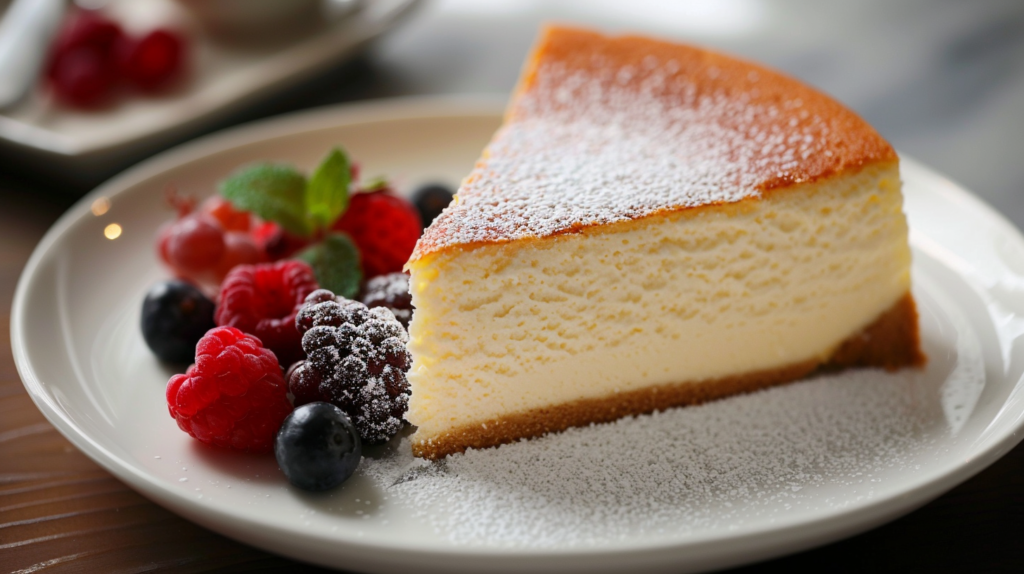
Step 1: Prepare the Cream Cheese Mixture
Melt Ingredients
- In a heatproof bowl over simmering water, combine:
- 8 oz (225g) cream cheese
- ¼ cup (60g) unsalted butter
- ½ cup (120ml) warmed whole milk
- Whisk until smooth and fully incorporated.
Cool and Add Yolks
- Remove from heat and let the mixture cool slightly.
- Whisk in:
- 5 egg yolks
- 1 tbsp freshly squeezed lemon juice
- A pinch of salt
Incorporate Dry Ingredients
- Sift ¼ cup (60g) cake flour and 2 tbsp (16g) cornstarch into the mixture.
- Whisk gently to create a smooth, lump-free batter.
Step 2: Whip the Egg Whites
Beat Egg Whites
- In a clean mixing bowl, beat 5 egg whites with an electric mixer on low speed until foamy.
Add Cream of Tartar
- Add ¼ tsp cream of tartar and continue mixing on medium speed until soft peaks form.
Incorporate Sugar
- Gradually add ½ cup (100g) sugar, beating on high speed until stiff, glossy peaks form.
Step 3: Combine Mixtures
Fold in Meringue
- Gently fold one-third of the whipped egg whites into the cream cheese batter using a spatula.
- This lightens the mixture, making it easier to incorporate the rest.
Incorporate Remaining Egg Whites
- Carefully fold in the remaining egg whites in two additions.
- Use gentle folding motions to avoid deflating the meringue.
Step 4: Prepare for Baking
Preheat Oven
- Set oven to 320°F (160°C).
Line Cake Pan
- Grease an 8-inch round cake pan and line the bottom with parchment paper.
- Wrap the exterior with aluminum foil to prevent water seepage.
Set Up Water Bath
- Place the cake pan inside a large baking tray.
- Pour hot water into the tray until it reaches halfway up the cake pan’s sides.
Step 5: Bake the Cake
Initial Bake
- Carefully transfer the setup to the preheated oven.
- Bake at 320°F (160°C) for 25 minutes.
Reduce Temperature
- Lower the oven to 280°F (140°C) and continue baking for 55 minutes, or until the cake is set and lightly golden on top.
Step 6: Cool & Serve
Gradual Cooling
- Turn off the oven and let the cake sit inside with the door slightly ajar for 15 minutes to prevent sudden deflation.
Remove from Pan
- Run a knife along the edges and gently release the cake from the pan.
Chill & Serve
- Let the cake cool completely, then refrigerate for at least 2 hours before slicing for the best texture.
Nutrition Score (Per Slice – Approx. 8 Servings)
This Japanese Cotton Cake is light and airy, making it a lower-calorie alternative to traditional cheesecake. Here’s the nutritional breakdown per slice:
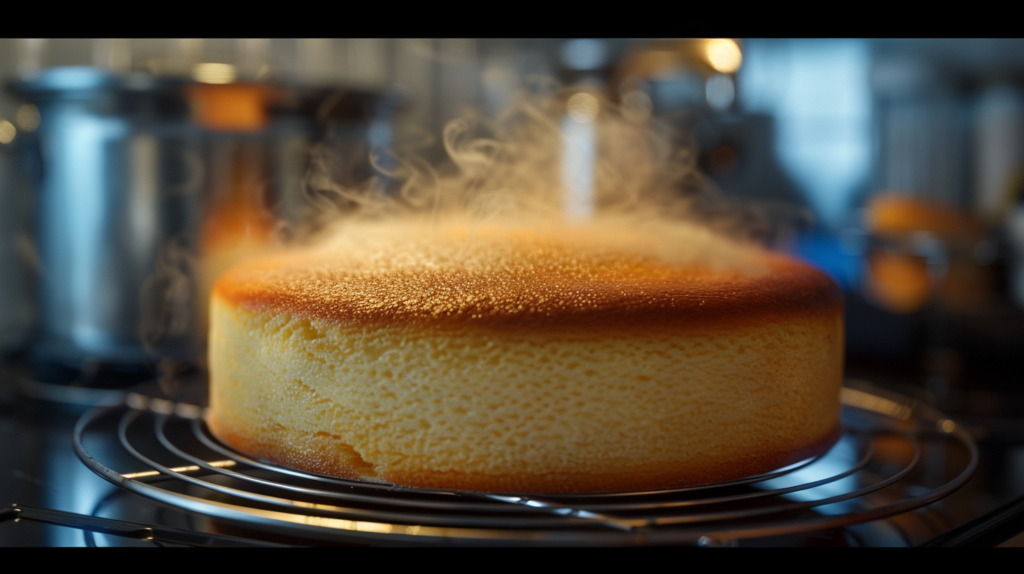
Macronutrient Profile
- Calories: 180 kcal – A light dessert option compared to denser cakes.
- Carbohydrates: 20g – Primarily from sugar and flour, providing a subtle sweetness.
- Protein: 5g – From eggs and cream cheese, giving structure to the cake.
- Fat: 9g – Mostly from cream cheese and butter, ensuring a creamy texture.
- Sugar: 12g – Just enough to balance the tangy cream cheese flavor.
- Sodium: 180mg – A moderate amount, mainly from cream cheese and added salt.
This cake is lighter in texture and calories than traditional cheesecakes, making it a perfect guilt-free indulgence!
Serving & Storage
To fully enjoy the light, fluffy texture of your Japanese Cotton Cake, follow these serving and storage tips.
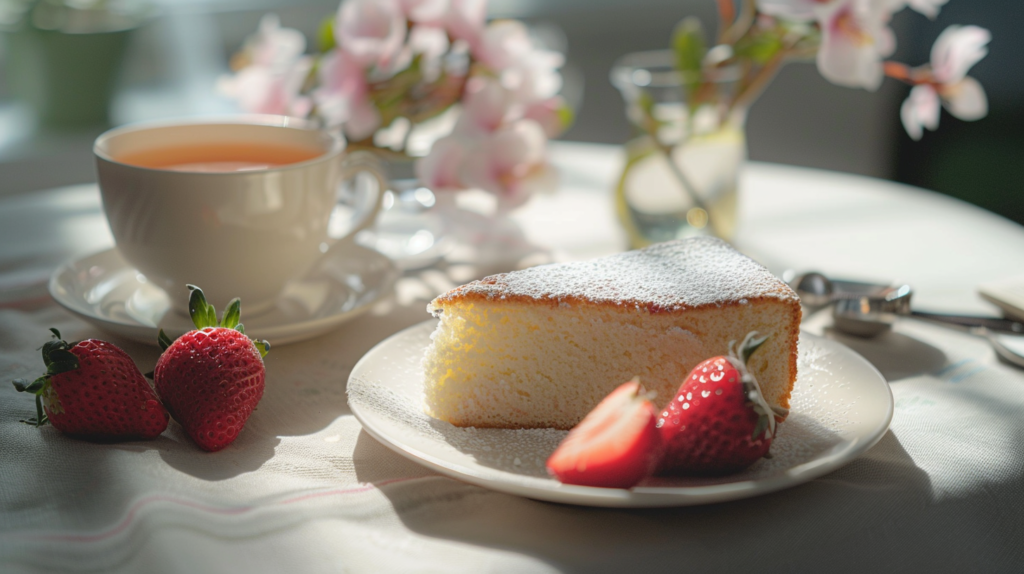
Serving Suggestions
- Enjoy as is – The subtle sweetness and melt-in-the-mouth texture are perfect on their own.
- Dust with powdered sugar – Adds a delicate, elegant finish.
- Pair with fresh fruit – Strawberries, blueberries, or raspberries complement the cake’s light flavor.
- Serve with whipped cream – A dollop of lightly sweetened whipped cream enhances the cloud-like texture.
- Accompany with tea or coffee – Green tea, matcha lattes, or a mild coffee pair beautifully.
Storage Tips
Refrigeration (Best for Freshness)
- Store in an airtight container in the fridge for up to 3 days.
- Cover lightly with plastic wrap to prevent it from drying out.
Freezing (For Longer Storage)
- Wrap individual slices in plastic wrap, then place them in a freezer-safe bag.
- Freeze for up to 1 month.
- To serve, thaw in the refrigerator for a few hours before enjoying.
With proper storage, your cotton cake stays fresh and delicious, whether eaten immediately or later!
Variations & Customizations
One of the best things about Japanese Cotton Cake is how easily it can be customized to create new flavors while maintaining its light and fluffy texture. Here are some creative variations to try!

1. Matcha Cotton Cake 🍵
- Add 1 tablespoon of matcha powder to the dry ingredients for a subtle green tea flavor.
- The matcha gives the cake a delicate bitterness that balances the sweetness.
- Pairs beautifully with whipped cream and red bean paste.
2. Chocolate Swirl Cotton Cake 🍫
- Melt ¼ cup (60g) of dark chocolate and swirl it into the batter before baking.
- Creates a beautiful marbled effect while adding rich chocolate undertones.
- For a stronger chocolate flavor, replace 1 tbsp of flour with cocoa powder.
3. Citrus Zest Cotton Cake 🍊🍋
- Add 1 teaspoon of finely grated lemon or orange zest to the batter.
- Enhances the refreshing, tangy aroma while keeping the cake light.
- Perfect when topped with candied orange slices or a citrus glaze.
4. Honey Cotton Cake 🍯
- Replace granulated sugar with ¼ cup of honey for a naturally sweet variation.
- The honey adds a subtle floral note and makes the cake even softer and more moist.
- Best served with a drizzle of extra honey and toasted nuts.
Each variation adds a unique twist while preserving the signature airy texture of this irresistible dessert!
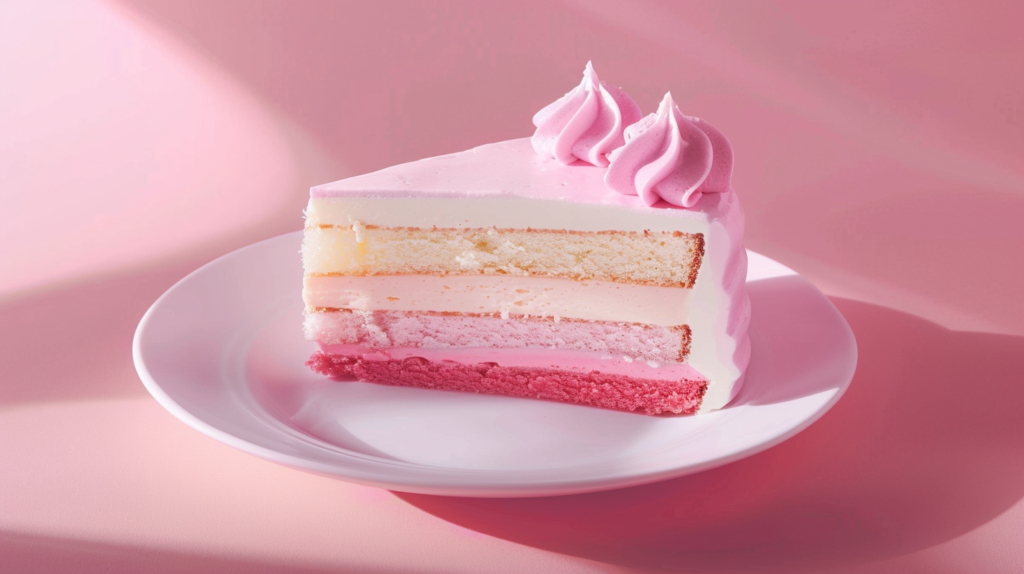
Frequently Asked Questions (FAQs)
Here are answers to some common questions about making the perfect Japanese Cotton Cake.
1. Why did my cotton cake collapse after baking?
Sudden temperature changes can cause shrinkage. To prevent this:
- Let the cake cool gradually by leaving it in the oven with the door slightly open for 15 minutes after baking.
- Avoid overmixing the batter, which can deflate the air trapped in the whipped egg whites.
2. Can I make cotton cake without cream cheese?
Yes! You can substitute:
- Greek yogurt – Maintains a light, tangy flavor.
- Mascarpone cheese – Creates a slightly richer texture.
- Sour cream – Works as a one-to-one replacement but results in a slightly denser cake.
3. How do I know when my cotton cake is fully baked?
Your cake is ready when:
- The top is golden brown.
- The center jiggles slightly but holds its shape.
- A toothpick inserted near the center comes out mostly clean with a few crumbs.
4. What’s the difference between cotton cake and cheesecake?
- Cotton cake is lighter and soufflé-like, with a soft, fluffy texture.
- Traditional cheesecake is dense, creamy, and rich, with a more pronounced cream cheese flavor.
These tips ensure your cotton cake turns out perfect every time!
Conclusion
Why You’ll Love This Cotton Cake
Japanese Cotton Cake is a delicate and airy dessert that’s as beautiful as it is delicious. With its light, cloud-like texture, gentle jiggle, and melt-in-your-mouth feel, it’s the perfect treat for any occasion. Whether you’re a beginner baker or an experienced pastry lover, this recipe is easy to follow with the right technique!

Now that you know how to make the perfect fluffy cotton cake, why not try a variation? Whether you go for matcha, chocolate swirl, or citrus zest, there’s no limit to how you can customize this cake.
We’d love to hear from you!
👉 What’s your favorite cotton cake variation?
👉 Did you try this recipe? Share your baking experience in the comments!
If you love baking, subscribe for more fluffy cake recipes and never miss a delicious update!


